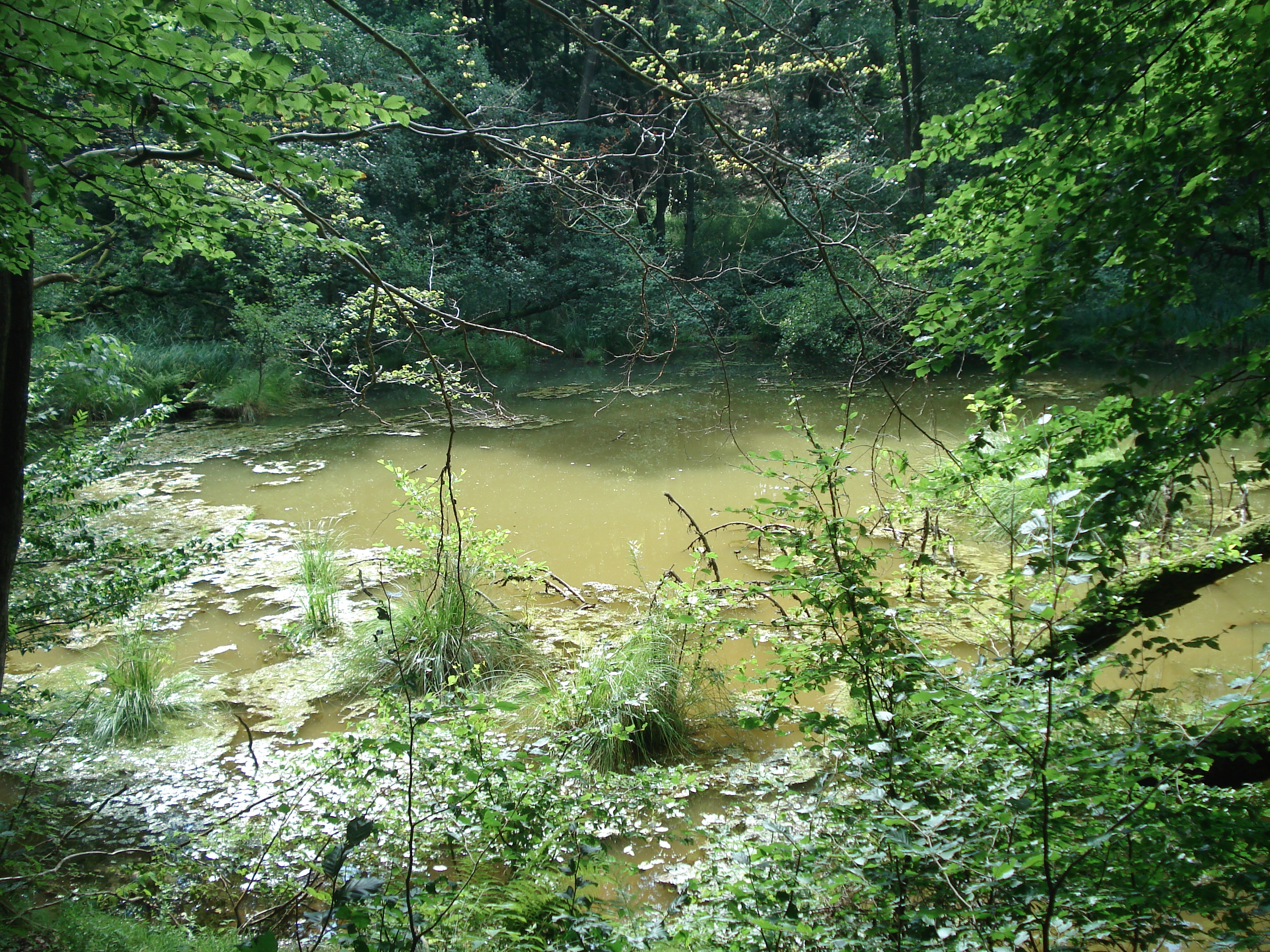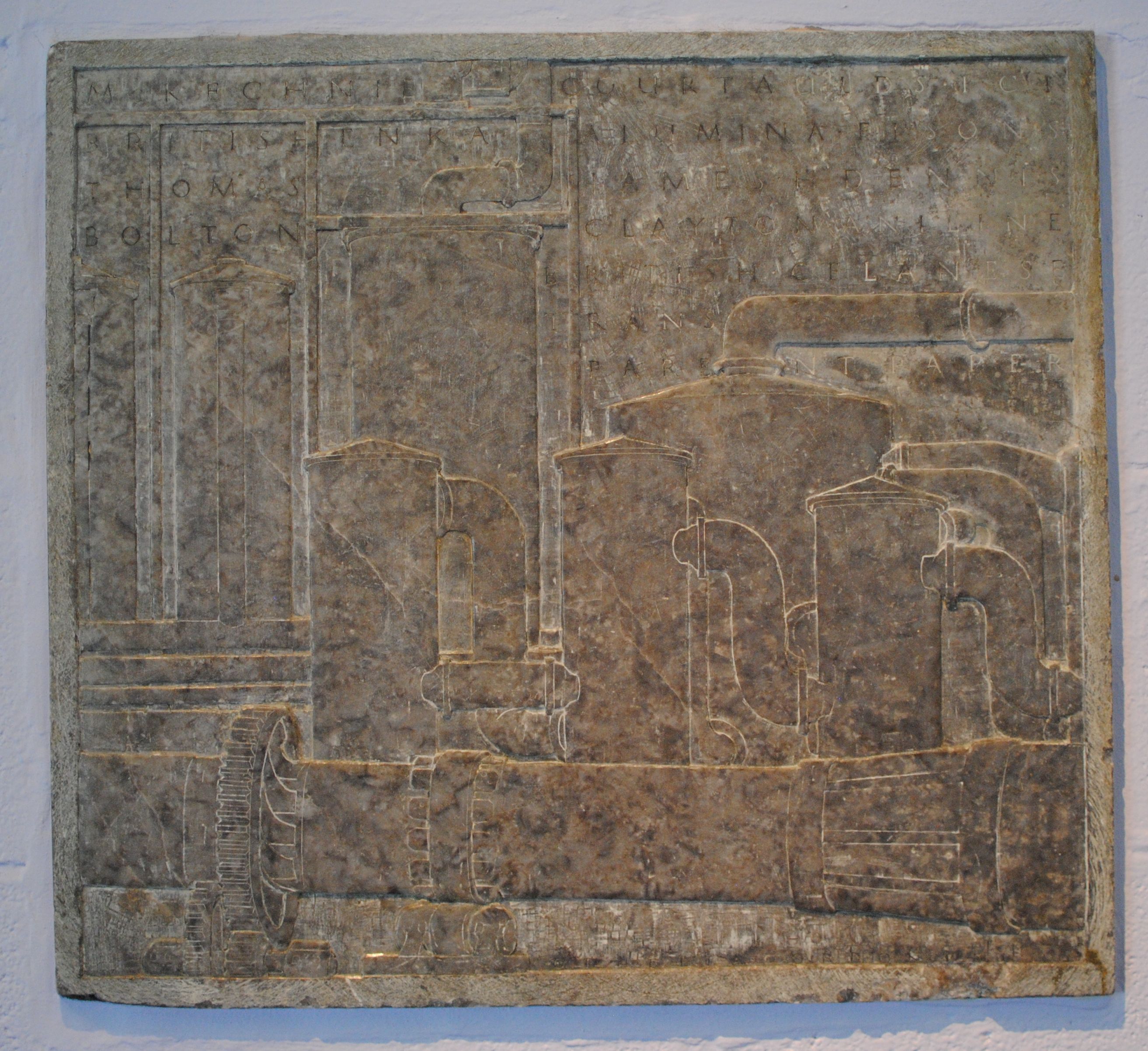|
Teufelsbäder
The Teufelsbäder ("Devil's Baths") is the name of a Moorland, moor landscape near Osterode am Harz in the Harz Mountains of central Germany. It lies within the nature reserve of the same name southeast of Augustental on the Bundesstraße 243, B 243 federal road. Description The ponds and marshy depressions in the nature reserve, which covers an area of roughly , are fed by the Teufelsloch (Teufelsbäder), Teufelsloch, a karst spring in the highland forest. They are the remains of an intensive deposition of Werra anhydrites and a representative part of the Karst, gypsum karst landscape of the South Harz. The Großes and Kleines Teufelsbad ("Large and Small Devil's Bath") were formed by embankments and have become silted up fishing ponds. Their runoff empties into the Apenke stream after flowing for just a few metres. in 1980 the Lower Saxon State Office of Soil Science drilled 145 metres into the karst cavities below the anhydrite. In the hole, a steel pipe was installed from wh ... [...More Info...] [...Related Items...] OR: [Wikipedia] [Google] [Baidu] |
Teufelsloch (Teufelsbäder)
The Teufelsloch ("Devil's Hole") is a karst spring near Osterode am Harz in the German state of Lower Saxony. Description The Teufelsloch is located southeast of Augustental in mature forest near the Karst Trail. It is a circular sinkhole with lustrous blue-green water. The stream that drains it feeds the Teufelsbäder moor to the west, and then flows through the Apenke to the river Söse. After heavy rain, other springs rise in the area around its banks that give the karst water in the Teufelsloch a brownish colour. The Teufelsloch lies within the Nature Reserve. Folk stories In earlier times, the Teufelsloch was perceived as something rather threatening. The origin of its shimmering blue waters rising from eerie depths could not be explained by the people. They talked of will-o'-the-wisps of human size, who would lure wanderers at night over a bent tree into the Teufelsloch. Others believed that the devil in the form of a giant one-eyed fish with a needle-sharp bite, lurked ... [...More Info...] [...Related Items...] OR: [Wikipedia] [Google] [Baidu] |
Karst Trail
The Karst Trail () is a marked and signed footpath that runs for over 250 kilometres between Förste in Lower Saxony and Pölsfeld in Saxony-Anhalt through the karst landscape of the South Harz in Germany. The path runs past a number of areas of natural beauty, including caves like the Heimkehle and the Barbarossa Cave, sinkholes like the Juessee and the Schwimmende Insel, depressions, moor landscapes like the Teufelsbäder The Teufelsbäder ("Devil's Baths") is the name of a Moorland, moor landscape near Osterode am Harz in the Harz Mountains of central Germany. It lies within the nature reserve of the same name southeast of Augustental on the Bundesstraße 243, B 24 ..., karst springs like the Rhumequelle and the Teufelsloch, disappearing streams and subterranean rivers like the Bauerngraben and gypsum rocks. External linksHomepage of the Karst Trail [...More Info...] [...Related Items...] OR: [Wikipedia] [Google] [Baidu] |
Apenke
The Apenke is a left tributary of the Söse in Osterode am Harz, Osterode in the Harz Mountains in the German state of Lower Saxony. Course The Apenke rises south of the Feenhöhe heights in the Bärengarten. It flows initially parallel to the Eipenke stream in a southwesterly direction. Near Augustental it is joined by more water draining from the Teufelsbäder moor. For the rest of its course the Apenke flows northwest and feeds the ponds of ''Kaiserteich'' and ''Pferdeteich''. In the Osterode town district of Petershütte it empties into the Söse. History The water power of the Apenke used to be used to drive the various water wheels for gypsum, corn and saw mills. In 1991, the Apenke was polluted in Osterode by {{cvt, 8, m3 of diesel fuel. The following is a translation of the verses (rhyming in the original German) written by Manfred Kleiner about the Apenke: :''Pure and clear all silvery bright, is the Apenke's little spring on the Harz's western rim, where I found th ... [...More Info...] [...Related Items...] OR: [Wikipedia] [Google] [Baidu] |
Moorland
Moorland or moor is a type of Habitat (ecology), habitat found in upland (geology), upland areas in temperate grasslands, savannas, and shrublands and the biomes of montane grasslands and shrublands, characterised by low-growing vegetation on Soil pH, acidic soils. Moorland today generally means uncultivated hill land (such as Dartmoor in South West England), but also includes low-lying wetlands (such as Sedgemoor, also South West England). It is closely related to heath, although experts disagree on the exact distinction between these types of vegetation. Generally, moor refers to Highland (geography), highland and high rainfall areas, while heath refers to lowland zones which are more likely to be the result of human activity. Moorland habitats are found mainly in Tropics, tropical Africa, Northern Europe, northern and western Europe, and South America. Most of the world's moorlands are diverse ecosystems. In the extensive moorlands of the tropics, biodiversity can be extremely ... [...More Info...] [...Related Items...] OR: [Wikipedia] [Google] [Baidu] |
Osterode Am Harz
Osterode am Harz (, ), often simply called Osterode (Eastphalian dialect, Eastphalian: ''Ostroe''), is a town in south-eastern Lower Saxony in central Germany on the south-western edge of the Harz mountains. It was the seat of government of the Landkreis, district of Osterode (district), Osterode. Osterode is located on the German Timber-Frame Road. Geography Water The Söse River flows through the town from the reservoir for the Söse Dam about 5 km upstream. The dam was built in 1931 and has a capacity of 25.5 million m³. The Harzwasserwerke water company pipes drinking water as far away as Bremen. Districts The following districts (mainly surrounding villages) are part of the borough of Osterode am Harz, with populations in brackets (as of 1 July 2012): * Dorste (1,650) * Düna (140) * Förste (2,000) * Freiheit (2,100) * Katzenstein (1,200) * Lasfelde (1,300) * Lerbach, Osterode am Harz, Lerbach (1,000) * Marke (150) * Nienstedt am Harz (440) * Osterode am Harz (11,5 ... [...More Info...] [...Related Items...] OR: [Wikipedia] [Google] [Baidu] |
Harz Mountains
The Harz (), also called the Harz Mountains, is a Mittelgebirge, highland area in northern Germany. It has the highest elevations for that region, and its rugged terrain extends across parts of Lower Saxony, Saxony-Anhalt, and Thuringia. The name ''Harz'' derives from the Middle High German word ''Hardt'' or ''Hart'' (hill forest). The name ''Hercynia'' derives from a Celtic name and could refer to Hercynian Forest, other mountain forests, but has also been applied to the Rhenohercynian zone, geology of the Harz. The Brocken is the highest summit in the Harz with an elevation of above Normalnull, sea level. The Wurmberg (Harz), Wurmberg () is the highest peak located entirely within the state of Lower Saxony. Geography Location and extent The Harz has a length of , stretching from the town of Seesen in the northwest to Eisleben in the east, and a width of . It occupies an area of , and is divided into the Upper Harz (''Oberharz'') in the northwest, which is up to 800 m high ... [...More Info...] [...Related Items...] OR: [Wikipedia] [Google] [Baidu] |
Bundesstraße 243
The B 243 runs from Hildesheim over Seesen and Herzberg am Harz to Nordhausen. Route Districts and municipalities * Lower Saxony ** Hildesheim (district) *** Hildesheim *** Diekholzen: Egenstedt *** Bad Salzdetfurth: Groß Düngen, Wesseln *** Bockenem: Nette, Bönnien, Bockenem, Bornum ** Goslar (district) *** Seesen: Rhüden, Bornhausen, Seesen, Engelade, Münchehof ** Osterode am Harz (district) *** Samtgemeinde Bad Grund: Gittelde, Windhausen, Badenhausen *** Osterode am Harz: Katzenstein, Lasfelde, Petershütte, Osterode, Osterode-Leege *** Hörden am Harz: Aschenhütte *** Herzberg am Harz: Herzberg, Scharzfeld *** Bad Lauterberg im Harz: Barbis, Bartolfelde, Osterhagen *** Bad Sachsa: Nüxei * Thuringia ** Nordhausen (district) *** Hohenstein: Mackenrode, Holbach *** Werther: Günzerode Combined routing * From Seesen to AS Engelade combined with the B 248 * Between AS Münchehof and Bad Grund combined with the B 242 * In Osterode betwe ... [...More Info...] [...Related Items...] OR: [Wikipedia] [Google] [Baidu] |
Karst Spring
A karst spring or karstic spring is a Spring (hydrology), spring (exsurgence, outflow of groundwater) that is part of a karst hydrological system. Description Because of their often conical or inverted bowl shape, karst springs are also known in German-speaking lands as a ''Topf'' ("pot") which is reflected in names such as Aachtopf (the source of the Radolfzeller Aach) or Blautopf (the source of the Blau (river), Blau river in Blaubeuren). Karst springs often have a very high yield (hydrology), yield or Discharge (hydrology), discharge rate, because they are often fed by underground drainage from a large catchment basin. Because the springs are usually the terminus of a cave drainage system at the place where a river cave reaches the Earth's surface, it is often possible to enter the caves from karst springs for exploration. Large karst springs are located in many parts of the world; the largest ones are believed to be in Papua New Guinea, with others located in Mediterranean ... [...More Info...] [...Related Items...] OR: [Wikipedia] [Google] [Baidu] |
Anhydrite
Anhydrite, or anhydrous calcium sulfate, is a mineral with the chemical formula CaSO4. It is in the orthorhombic crystal system, with three directions of perfect cleavage parallel to the three planes of symmetry. It is not isomorphous with the orthorhombic barium (baryte) and strontium ( celestine) sulfates, as might be expected from the chemical formulas. Distinctly developed crystals are somewhat rare, the mineral usually presenting the form of cleavage masses. The Mohs hardness is 3.5, and the specific gravity is 2.9. The color is white, sometimes greyish, bluish, or purple. On the best developed of the three cleavages, the lustre is pearly; on other surfaces it is glassy. When exposed to water, anhydrite readily transforms to the more commonly occurring gypsum, (CaSO4·2H2O) by the absorption of water. This transformation is reversible, with gypsum or calcium sulfate hemihydrate forming anhydrite by heating to around under normal atmospheric conditions. Anhydrite is common ... [...More Info...] [...Related Items...] OR: [Wikipedia] [Google] [Baidu] |
Karst
Karst () is a topography formed from the dissolution of soluble carbonate rocks such as limestone and Dolomite (rock), dolomite. It is characterized by features like poljes above and drainage systems with sinkholes and caves underground. There is some evidence that karst may occur in more weathering-resistant rocks such as quartzite given the right conditions. Subterranean drainage may limit surface water, with few to no rivers or lakes. In regions where the dissolved bedrock is covered (perhaps by debris) or confined by one or more superimposed non-soluble rock strata, distinctive karst features may occur only at subsurface levels and can be totally missing above ground. The study of ''paleokarst'' (buried karst in the stratigraphic column) is important in petroleum geology because as much as 50% of the world's Oil and gas reserves and resource quantification, hydrocarbon reserves are hosted in carbonate rock, and much of this is found in porous karst systems. Etymology ... [...More Info...] [...Related Items...] OR: [Wikipedia] [Google] [Baidu] |
Dye Tracing
Dye tracing is a method of tracking and tracing various flows using dye as a flow tracer when added to a liquid. Dye tracing may be used to analyse the flow of the liquid or the transport of objects within the liquid. Dye tracking may be either qualitative, showing the presence of a particular flow, or quantitative, when the amount of the traced dye is measured by special instruments. Fluorescent dyes Fluorescent dyes are often used in situations where there is insufficient lighting (e.g., sewers or cave waters), and where precise quantitative data are required (measured by a fluorometer). In 1871, fluorescein was among the first fluorescent dyes to be developed. Its disodium salt (under the trademark " uranine") was developed several years later and still remains among the best tracer dyes.An educational website about karst an ... [...More Info...] [...Related Items...] OR: [Wikipedia] [Google] [Baidu] |







